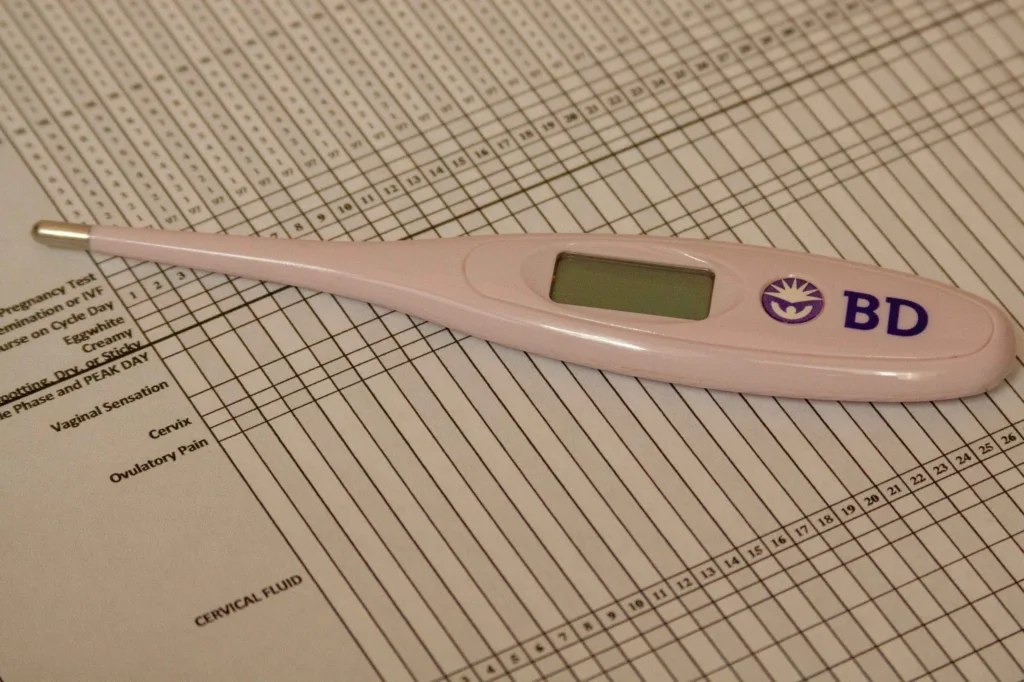The LH surge is an essential part of the menstrual cycle that triggers ovulation, allowing for the possibility of conception. LH, or luteinizing hormone, is produced by the pituitary gland and, when present in high levels, signals the ovaries to release an egg. But what happens to LH levels during implantation, the next critical step in pregnancy?
First, let’s review the LH surge. Typically, LH levels remain relatively low throughout the menstrual cycle until about midway through, when they begin to rise. This increase in LH is what triggers ovulation, usually occurring around day 14 of a 28-day cycle. After ovulation, LH levels drop again, allowing the corpus luteum to form and produce progesterone to support a potential pregnancy.
Now, during implantation, which occurs about 6-10 days after ovulation, thre is no major change in LH levels. In fact, LH levels should be low at this point, as the corpus luteum is producing progesterone to support the uterine lining and prevent further ovulation. However, it is important to note that LH and hCG, or human chorionic gonadotropin, the hormone produced by the developing placenta during pregnancy, share a similar molecular structure. This means that LH tests, such as ovulation predictor kits, can sometimes detect hCG and give a false positive result in early pregnancy.
So, while LH levels do not surge during implantation, there may be a slight increase in LH sensitivity due to the presence of hCG. It is important to use a reliable pregnancy test to confirm pregnancy, rather than relying on an LH test alone.
The LH surge plays a crucial role in triggering ovulation, but does not have a direct impact on implantation. During implantation, LH levels should be low, and a reliable pregnancy test should be used to confirm pregnancy.
The Impact of Conception on Luteinizing Hormone Levels
LH levels can rise after conception, but only for a short period of time. After conception, the fertilized egg implants itself in the uterine lining and begins to produce human chorionic gonadotropin (hCG), wich is similar in structure to LH. The hCG hormone then signals to the ovaries to stop producing eggs and to the corpus luteum to continue producing progesterone to maintain the pregnancy.
In some cases, LH levels may rise again later in pregnancy as the body prepares for labor and delivery. However, it is important to note that LH levels are not routinely tested during pregnancy as hCG is the main hormone monitored to confirm and track pregnancy.

Does LH Surge Indicate Ovulation If Pregnant?
The LH surge is a hormonal event that triggers ovulation in the menstrual cycle. However, if you’re pregnant, the LH surge may not indicate ovulation, as you have already ovulated and conceived. It’s important to note that the LH hormone and the pregnancy hormone, human chorionic gonadotropin (hCG), are structurally similar, and at-home ovulation tests may detect both hormones. Thus, a positive ovulation test may actually indicate pregnancy rather than ovulation. If you suspect that you might be pregnant, it’s best to confirm with a pregnancy test and consult with your healthcare provider for further guidance.
Can a Positive Luteinizing Hormone Test Indicate Early Pregnancy?
LH (luteinizing hormone) can be positive in early pregnancy. However, this is not because the woman is ovulating, but rather because LH and hCG (human chorionic gonadotropin) are similar in structure and can bind to the same receptors in the body. During early pregnancy, hCG levels rise rapidly and may cross-react with LH tests, resulting in a false-positive reading. Therefore, it is important to use a pregnancy test to confirm pregnancy rather than relying on an LH test. Additionally, LH levels will typically decrease after ovulation, so if a woman continues to have high LH levels after a positive pregnancy test, it may indicate a potential complication and shoud be discussed with a healthcare provider.
Can LH Levels Predict Pregnancy?
LH (luteinizing hormone) is a hormone produced by the pituitary gland that plays a crucial role in the menstrual cycle of a woman. It triggers the release of an egg from the ovary during ovulation, which is the time when a woman is most fertile and can become pregnant.
However, LH levels can also indicate pregnancy. During pregnancy, the levels of LH rise and remain elevated throughout the fist trimester. This is because the placenta produces a hormone called human chorionic gonadotropin (hCG), which is structurally similar to LH and can stimulate the LH receptors in the ovaries.
Therefore, LH ovulation tests can be used to detect early pregnancy. These tests detect the surge of LH that occurs just before ovulation, but they can also detect the elevated LH levels that occur during early pregnancy. However, it’s important to note that LH tests are not designed for pregnancy detection, and they are not as accurate as traditional pregnancy tests that detect hCG levels directly.
While LH levels can indicate pregnancy, it’s recommended to use a traditional pregnancy test kit for accurate results. If you suspect you might be pregnant, it’s essential to consult with a healthcare professional for proper prenatal care.
The Effects of Implantation on Luteinizing Hormone Levels
LH (luteinizing hormone) does not dip after implantation. In fact, LH levels remain elevated duing the early stages of pregnancy. LH is responsible for stimulating the release of the egg during ovulation and plays a critical role in the development of the corpus luteum, which produces progesterone. After ovulation, LH levels decrease, and progesterone levels increase, preparing the uterus for implantation. Once implantation occurs, the embryo begins to produce human chorionic gonadotropin (hCG), which acts similarly to LH and maintains the corpus luteum. This results in sustained progesterone levels that are necessary for a successful pregnancy. Therefore, while LH levels may vary throughout the menstrual cycle, they do not dip after implantation.

Timing of Implantation Following LH Surge
After the Luteinizing Hormone (LH) surge, ovulation occurs within the next 24-36 hours. Following ovulation, it takes about 6 to 12 days for the fertilized egg to travel down the fallopian tube and reach the uterus for implantation. However, the most common range for implantation is between days 8 to 10 past ovulation. It’s important to note that implantation can vary from person to person and may occur earlier or later than the typical timeframe.
The Role of Luteinizing Hormone (LH) During Implantation
During implantation, LH levels can fluctuate in some individuals. LH, or luteinizing hormone, is a hormone produced by the pituitary gland that plays a key role in regulating the menstrual cycle and ovulation in females. Normally, LH levels rise sharply just before ovulation, triggering the release of an egg from the ovary.
However, during implantation, LH levels can also rise again due to the hormonal changes that occur when a fertilized egg implants in the uterine lining. This rise in LH is thought to be caused by the hormone human chorionic gonadotropin (hCG), which is produced by the developing embryo after implantation.
The rise in LH levels during implantation can be detected by usng ovulation predictor kits (OPKs), which work by measuring the levels of LH in urine. Some women may experience a second surge in LH levels around the time of implantation, which can be mistaken for ovulation if they are using an OPK to track their fertility.
It’s worth noting that not all women will experience a rise in LH during implantation, and the exact timing and duration of this surge can vary. Additionally, other factors such as stress or illness can also affect LH levels and make it difficult to interpret changes in hormone levels. Therefore, it’s important to speak with a healthcare provider if you have any concerns about your fertility or menstrual cycle.
Likelihood of Pregnancy with LH Surge
When a woman experiences a surge in luteinizing hormone (LH) levels, it indicates that ovulation is likely to occur within the next 12-36 hours. During this time, the chances of geting pregnant are generally considered to be the highest in the menstrual cycle. However, the likelihood of pregnancy with an LH surge depends on various factors such as the timing of intercourse, the quality of sperm and egg, and any underlying fertility issues.
According to studies, the probability of pregnancy with LH surge is approximately 33% two days before ovulation, 41% one day before ovulation, 20% on the day of ovulation, and 8% one day post-ovulation. These figures are based on the assumption that intercourse occurs during the fertile window, which is typically a 5-day period that ends on the day of ovulation.
It’s important to note that while an LH surge can indicate the best time to conceive, it’s not a guarantee of pregnancy. Other factors such as age, overall health, and pre-existing medical conditions can affect fertility and the chances of conceiving. Therefore, it’s always a good idea to consult a healthcare provider or a fertility specialist for personalized advice and guidance.
Can an OPK Positive Result After Ovulation Indicate Pregnancy?
OPKs or ovulation predictor kits detect the presence of luteinizing hormone (LH) in a woman’s urine, which is a hormone that surges just before ovulation. If you have a positive OPK, it usually means that you’re about to ovulate or already have. However, a positive OPK after ovulation has occurred could indiate pregnancy. This is because, in the early stages of pregnancy, the body continues to produce LH, which can cause a positive OPK result. However, it’s important to note that an OPK is not a reliable pregnancy test, and you should confirm pregnancy with a proper pregnancy test. Additionally, a sustained positive OPK result might be a sign of a medical condition or hormonal imbalance, so it’s important to consult your healthcare provider if you experience prolonged positive OPK results or suspect pregnancy.

Does Luteinizing Hormone Increase Prior to Human Chorionic Gonadotropin?
LH (luteinizing hormone) typically rises before hCG (human chorionic gonadotropin) in the menstrual cycle. LH is a hormone produced by the pituitary gland that stimulates the final development and release of an egg from the ovary (ovulation). LH levels typically surge about 24-36 hours before ovulation, causing the release of the mature egg from the ovary.
In contrast, hCG is a hormone produced by the placenta after fertilization and implantation of an embryo in the uterus. It is the hormone detected by pregnancy tests and is responsible for maintaining the early pregnancy by supporting the production of progesterone by the ovaries.
During fertility treatments, hCG is oftn given as a trigger shot to stimulate ovulation after the ovaries have been stimulated to produce multiple eggs. This is done to time the release of the eggs for optimal chances of fertilization during timed intercourse or insemination.
Therefore, while LH typically rises before ovulation, hCG is administered at a specific time to trigger ovulation and is not naturally produced by the body until after fertilization and implantation.
Conclusion
The LH surge is a crucial event in the menstrual cycle that triggers the release of a mature egg from the ovaries. Monitoring LH levels through ovulation tests can help women predict when they are most fertile and increase their chances of conceiving. However, it is important to note that LH levels can also be affected by vaious factors, such as stress, medication, and certain medical conditions. Additionally, while a positive ovulation test can indicate a potential pregnancy, it is not a reliable diagnostic tool, and a pregnancy test should be used to confirm pregnancy. understanding the LH surge and its role in the reproductive process can be beneficial for women who are trying to conceive or seeking to better understand their menstrual cycle.
